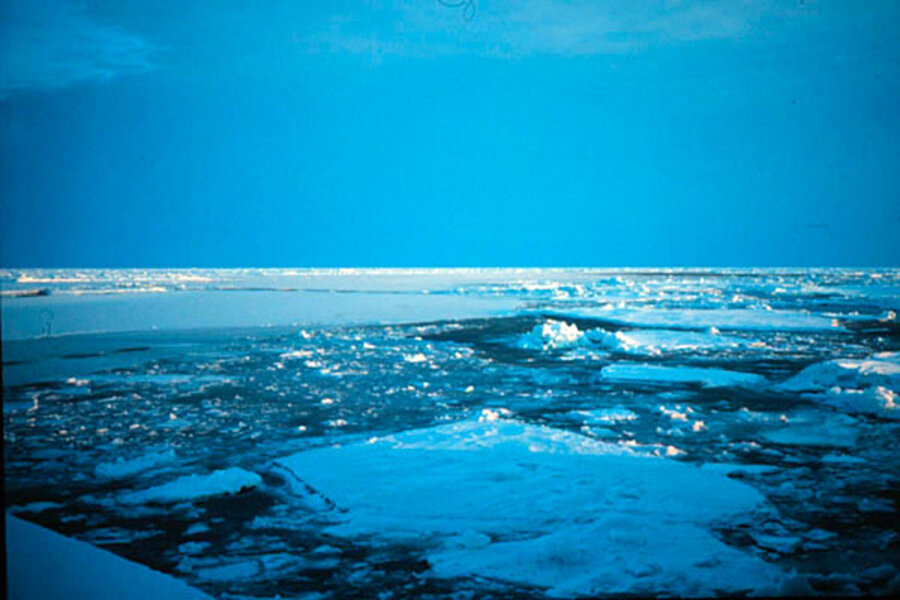Svalbard above freezing? 'Shocking' temps have huge consequences
Loading...
| STOCKHOLM
The Arctic archipelago of Svalbard has seen such extreme warmth this year that the average annual temperature could end up above freezing for the first time on record, scientists said Friday.
Ketil Isaksen of the Norwegian Meterological Institute said that the average temperature in Longyearbyen, the main settlement in Svalbard, is expected to be around 0 Celsius (32 Fahrenheit) with a little over a month left of the year.
"This is a little bit shocking," Dr. Isaksen said. "If you had asked me five or 10 years ago, I could not have imagined such numbers in 2016."
The normal yearly average in Svalbard, an island group midway between the North Pole and continental Norway, is 6.7 C below zero (-20 F). The warmest year until now was 2006, when the average temperature in Svalbard was -1.8 C (-29 F), Isaksen said.
"Svalbard is a very good spot to show what's happening in the Arctic at the moment," he said, noting that each of the past 73 months has been warmer than average.
The rising temperatures in the Arctic are affecting permafrost and snow cover as well as the amount of sea ice, which this year was the second-lowest on record. Isaksen said the sea ice is building up much slower than normal as winter approaches.
"There are still huge areas in the Barents Sea and Kara Sea to the east of Svalbard that are free of ice," he said. "They should normally be ice-covered."
Scientists believe the loss of sea ice accelerates the warming because ice reflects sunlight back into space while the darker surface of the ocean absorbs most of the radiation.
As The Christian Science Monitor's Rowena Lindsay wrote Wednesday:
Sea ice essentially acts as an air conditioner for the world, moderating global temperatures and creating a place for the heat brought in at the tropics to escape to so that the Earth does not simply grow exponentially hotter, Dr. [Brenda] Ekwurzel tells The Christian Science Monitor in a phone interview.
Additionally, anything white – snow, ice, glaciers, or ice sheets – will reflect energy from the sun back into space, helping to keep the Earth cool ... But when the ice melts, the sun hits the dark ocean waters instead, which absorbs rather than reflects the sun’s energy.
A report released Friday by the Stockholm Environment Institute identified the decline in sea ice cover and the thinning of the Greenland ice sheet among several "regime shifts" happening in the Arctic as a result of climate change.
"These regime shifts affect the stability of the climate and landscape, plant and animal species' ability to survive, and indigenous peoples' subsistence and ways of life," the institute said.
As the Monitor's Zhai Yun Tan wrote Friday:
The changes set in motion by global warming were particularly pronounced this year, with the lowest sea ice level recorded in both the Arctic and Antarctic and the highest average global surface temperature occurring from January to June, with some Arctic islands experiencing above freezing average annual temperatures for the first time on record. As past research has shown that such changes are amplified in polar regions, scientists are concerned about local communities’ ability to survive the changes brought by global warming.
“Arctic ecosystems are changing in dramatic ways: ice is melting, sea levels are rising, coastal areas are eroding, permafrost is thawing and landscapes are changing as the range of species shift,” the authors wrote in the report. “Resilience enables people and ecosystems to cope with the shocks and stresses associated with these changes … Yet some changes are so substantial … that they fundamentally alter the functioning of a system.”
Several studies show the world as a whole is on track for a new heat record this year, with the El Niño weather phenomenon adding to the underlying warming trend.







